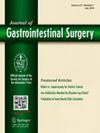Application of machine learning models to identify predictors of good outcome after laparoscopic fundoplication
IF 2.2
3区 医学
Q3 GASTROENTEROLOGY & HEPATOLOGY
引用次数: 0
Abstract
Background
Laparoscopic fundoplication remains the gold standard treatment for gastroesophageal reflux disease. However, 10% to 20% of patients experience new, persistent, or recurrent symptoms warranting further treatment. Potential predictors for the best outcome after laparoscopic fundoplication were tested using a mature prospectively maintained database.
Methods
Data from 894 consecutive patients who underwent primary laparoscopic fundoplication from 1998 to 2015 were examined using regression and machine learning (ML) models. Preoperative factors were assessed for influence on postoperative outcomes: heartburn, dysphagia, and satisfaction scores at a median follow-up of 5 years.
Results
The accuracy in predicting heartburn score (range, 0–10) assessed using the root mean squared error (RMSE) was similar to a negative binomial regression model (RMSE = 2.39) and the least absolute shrinkage support operator ML model (RMSE = 2.34). The multivariate analysis using only patients with complete data (n = 221) generated a lower error than using mean imputation for patients with missing values. The most predictive variables were male sex for heartburn (β = −1.48 [95% CI, −2.37 to −0.6; P =.001) and dysphagia (β = −4.70 [95% CI, −8.02 to −1.39; P =.006) and percentage of esophageal peristalsis for satisfaction (β = 0.63 [95% CI, 0.16–1.10]; P =.009) and dysphagia (β = −1.85 [95% CI, −3.43 to −0.27]; P =.02).
Conclusion
Although male sex and degree of intact peristalsis are significant predictors for outcomes after laparoscopic fundoplication, prediction of individual patient outcome was relatively poor, and ML prediction models provided only marginal improvement in accuracy. Clinical acumen and a discussion with patients to set realistic postoperative expectations cannot be replaced by regression models or standard ML prediction algorithms at the present time.
求助全文
约1分钟内获得全文
求助全文
来源期刊
CiteScore
5.50
自引率
3.10%
发文量
319
审稿时长
2 months
期刊介绍:
The Journal of Gastrointestinal Surgery is a scholarly, peer-reviewed journal that updates the surgeon on the latest developments in gastrointestinal surgery. The journal includes original articles on surgery of the digestive tract; gastrointestinal images; "How I Do It" articles, subject reviews, book reports, editorial columns, the SSAT Presidential Address, articles by a guest orator, symposia, letters, results of conferences and more. This is the official publication of the Society for Surgery of the Alimentary Tract. The journal functions as an outstanding forum for continuing education in surgery and diseases of the gastrointestinal tract.

 求助内容:
求助内容: 应助结果提醒方式:
应助结果提醒方式:


